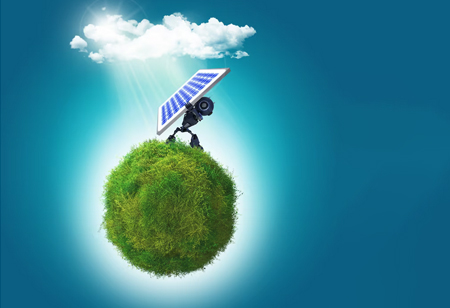
India’s installed renewable energy capacity will reach 170 GW by March, 2025 from 135 GW in December, 2023 as said by ICRA last Friday. In the last few years, renewable energy production has heavily taken off in the country influenced by initiatives being implemented in various RE sources like wind, tidal, solar, WTE and others.
The ICRA report has added value to the government’s announcement to achieve net zero emissions by 2070 and produce half of the electricity requirements of the country through renewable energy sources by 2030. Many nations have adopted minimal carbon intensive approaches in the past and India is also thinking of implementing those now and build an economy that promotes environmental sustainability. The interim budget presented by FM Nirmala Sitharaman has also supported the growth of the renewable energy sector of the nation.
"ICRA estimates that the rise in the RE capacity over the next five-six years is estimated to enhance the share of RE plus large hydro in the all-India electricity generation from about 23 per cent in FY24 to around 40 per cent in FY30," ICRA mentioned in a statement to the media.
Several new technologies have emerged over the past decade that have helped the country with the intake of RE sources and lower the dependence non-renewable sources. Let us now look into some of those advancements that have been driving growth for RE sources.
India is currently recognized as one of the largest solar energy producers globally with more than 13 percent of its installed capacities in the Re sector belonging to it. Government initiatives like the Jawaharlal Nehru Solar Mission (JNNSM) have been trying to spread awareness and increase the usage of solar energy to fulfill the energy requirements for various core sectors. We have also seen a growing adaptation of for solar energy through rooftop installations, construction of solar parks and various other solar utility projects.
“Globally, India ranks fourth in renewable energy capacity and wind power and fifth in solar power capacity. India has set a target to reduce the carbon intensity of the nation’s economy by less than 45% by the end of the decade, achieve 50% cumulative electric power installed by 2030, and achieve net-zero carbon emissions by 2070”, mentioned Arun Tripathi, Head of Energy Business & EHS, Hero Future Energies.
To give an example, the usage of solar powered water pumping systems are increasingly gaining momentum in the agriculture sector for irrigation purposes. In remote areas where electricity is still not available, farming communities are currently dependent on these pumping systems.
India has been developing wind energy for many years now and also holds a significant position in the global wind energy market. Various technologies for wind energy development are prevalent all across the country that have been placed at strategic locations to promote the usage of RE sources. The Pradhan Mantri Kisan Urja Suraksha initiative has been notable in this regard which is trying to motivate the population to increase the usage of RE sources.
The deployment of off-shore and onshore turbines can be marked as one of the key technology implementations that have been done in this sector. Onshore turbines have gained much popularity in India that are planted over high towers due to their capacity to capture maximum wind speeds that are available at greater heights. Compared to this, off-shore turbine development and implementation is at a nascent stage in the country but is expected to take off very soon dues to their capability of providing consistency in wind speeds.
The Central Electricity Authority (CEA) of India has estimated that the country has an overall potential of 145 GW for hydroelectricity of which only 29 percent has been constructed until now. Hydro power is one of the growing segments for RE sources of the country and the government has also taken several initiatives to accelerate its growth.
The Ministry of Environment, Forest, and Climate Change (MoEFCC) has given the approval regarding environment related concerns to pumped storage hydropower projects with a production capacity of 11.98 gigawatts (Gw). This marks the era of these advanced technology based energy storage projects to be approved at one shot in India. Clearances and approvals have been given to eight projects that involve an investment of Rs 81,981 crore to be distributed among five states, according to the information posted on the Parivesh portal of MoEFCC.
Waste to Energy technologies have been gaining momentum in India since the last few years. With the amount of waste generated in the country, India can produce more than 65 GW of electricity every year according to media reports. There have been considerable investments in developing technologies for WTE production in the country that is also evident with the emergence of green startups that are trying to make use of these technologies to provide WTE solutions.
To give an example, India generates 150,000 tonnes of Municipal Solid Waste (MSW) every day according to the State of India’s Environment Report 2023. The government is currently exploring technologies in order to put this waste to good use and create electricity through WTE processes.
There are few other sectors like production of geothermal energy, tidal energy and others are also gaining momentum in the Indian market and adding considerable value to the RE production of the country. The renewable energy sector of India will be witnessing various other innovations in this regard in the coming years.
We use cookies to ensure you get the best experience on our website. Read more...